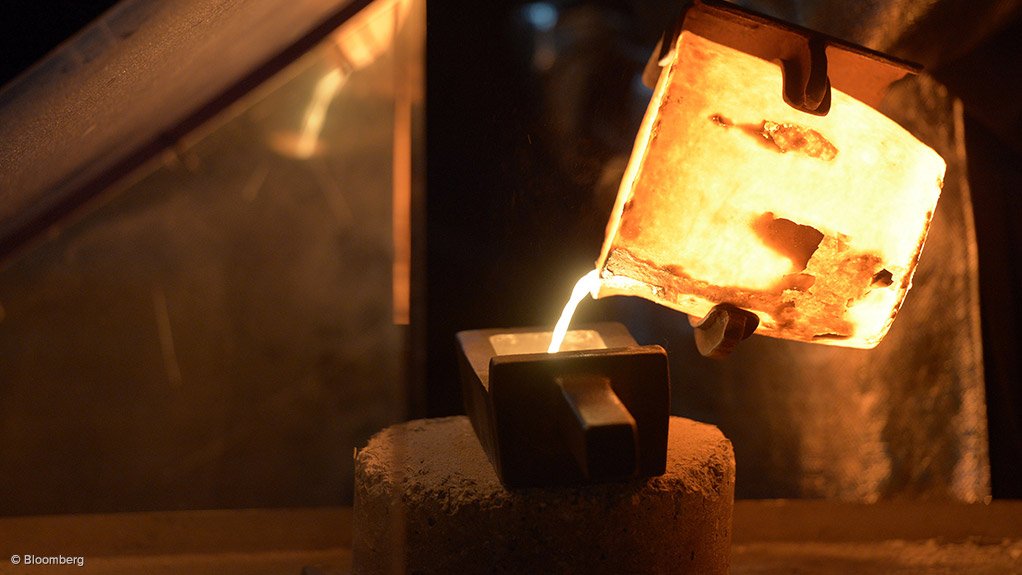PERTH (miningweekly.com) – Wet weather has resulted in Australian gold production falling during the March quarter, mining consultant Surbiton Associates has reported.
The country's gold mines produced 71.5 t in the quarter, which is 6 t, or 8%, less than the 77.5 t produced in the December quarter. Nevertheless, gold production for the quarter was similar to output in the March quarter of 2016.
“The fall in output for the recent March quarter was not surprising, as wet weather early in the year often disrupts production,” said Surbiton director Dr Sandra Close.
“This year heavy rain in Western Australia, which accounts for about three-quarters of Australia’s gold output, plus the effects of Cyclone Debbie in Queensland in late-March, played havoc with gold production at many operations across the country.”
Close said that while the lower production marked a poor start to the calendar year, typically output was higher in the other three quarters.
Further, the March quarter is the shortest quarter of the year and this makes a difference, as every day of the year about three-quarters of a tonne of gold is produced, worth over A$40-million at current prices.
“Heavy rain affects mining and ore haulage at gold mines in a number of ways, including flooding, access for supplies and materials handling problems,” she said.
“As well, in opencuts and in underground operations where the ore is often hauled from underground to the lower levels of previously mined openpits, problems can arise due to ore and waste having to be trucked up steep, greasy haul roads.”
If the mining operations cannot produce enough ore to keep the processing plant at full capacity, then stockpiled material is sometimes used to supplement the ore feed. This material is usually of lower grade and results in less gold being produced and higher costs of gold production.
“However, in the March quarter 2017 the lower gold production was mainly due to a reduction in the tonnage of ore treated by the primary gold producers, along with fewer days in the quarter,” Close said.
“There was only limited use of lower grade stockpiles, as there was not a significant change in the average weighted recovered grade on an industry-wide basis.”
Gold major Newcrest Mining’s Telfer mine, in Western Australia, experienced significant disruption, with record rainfall in January. This led to a fall in output of around 35 000 oz of gold for the March quarter 2017, compared with the December quarter 2016.
Close said that many other operations also reported lower output in the quarter, including Newmont’s Tanami operation, which was down 25 000 oz, AngloGold Ashanti and Independence’s Tropicana operation, down 22 000 oz, and the Super Pit at Kalgoorlie, owned equally by Newmont and Barrick, down 16 000 oz.
“The Australian gold industry continues to benefit from a relatively stable, relatively attractive, Australian dollar gold price, maintained in part by a favourable US dollar exchange rate, with an Australian dollar worth around 75 US cents,” Close said.
“This has encouraged further activity in the sector, including the start-up of several mothballed treatment plants.”
Production continues to ramp up at Blackham Resources’ Wiluna project, and Westgold Resources’ Fortnum operation is currently being commissioned and Eastern Goldfields’ Davyhurst treatment plant is nearing production.
Furthermore, Maximus Resources, which bought Ramelius Resources’ mothballed Wattle Dam plant near Coolgardie, expects to toll treat ore from other companies soon, while Toronto-listed Monument Mining hopes to bring its Burnakura treatment plant into production later in 2017.
“Some years ago when the Australian dollar was strong and worth more than one US dollar, over half of the mineral exploration expenditure by Australian companies was being spent overseas,” Close said.
“It is encouraging that more recently this seems to have turned around, as we note that now there is a greater emphasis on exploration within Australia.”
She said that Australian control of the local gold mining industry still remains at just over 50%, although there has been increased ownership of some Australian operations by Chinese and Canadian companies.
Edited by: Creamer Media Reporter
EMAIL THIS ARTICLE SAVE THIS ARTICLE
ARTICLE ENQUIRY
To subscribe email subscriptions@creamermedia.co.za or click here
To advertise email advertising@creamermedia.co.za or click here













